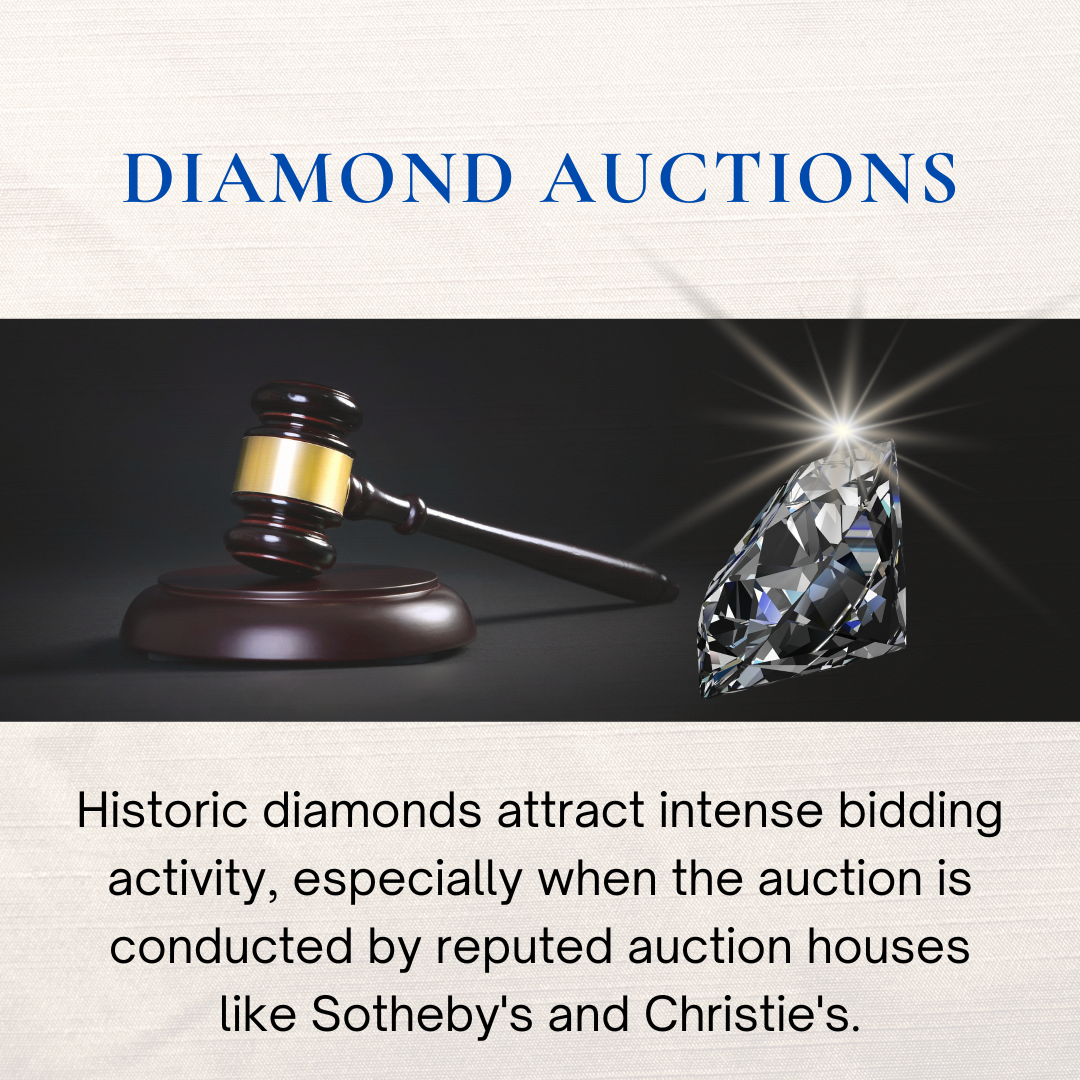Authenticity And Diamond Auctions
Big auction houses like Sotheby’s, Christie’s, and Bonhams take the authenticity of historic diamonds very seriously. When dealing with gems that have royal or historic provenance, they go through an intensive and meticulous process to ensure everything is genuine.
Diamond auctions that feature historic or storied diamonds often stir up a frenzy of interest and can result in jaw-dropping bids. The combination of rarity, provenance, and the glamour associated with legendary diamonds makes these auctions highly anticipated events.
Renowned auction houses like Sotheby’s and Christie’s have built reputations for maintaining rigorous standards when it comes to authenticity, provenance documentation, and gemological evaluation. Their auctions attract knowledgeable collectors, museums, and high-net-worth individuals who trust these platforms to handle such precious and historically significant stones.


AUCTIONS BUILD CONFIDENCE
Diamond auctions conducted by prestigious houses like Sotheby’s and Christie’s inspire confidence, as seasoned diamond collectors trust in the authenticity and provenance of the diamonds that they accept into their auctions. Here’s how they do it:
Provenance Research: They trace the diamond’s history—who owned it, where it was documented or exhibited, and whether it appeared in royal inventories, portraits, or publications. For royal diamonds, provenance adds huge value.
Gemological Testing: Diamonds are examined and certified by top gemological laboratories like GIA (Gemological Institute of America) or SSEF (Swiss Gemological Institute). These labs provide data on cut, clarity, origin, and treatments, if any.
Scientific Imaging & Reports: High-tech imaging tools, spectroscopy, and other non-invasive techniques are used to analyze the gem. For historic diamonds, understanding whether the stone has been recut or altered is crucial.
Expert Panels: Auction houses often consult historians, gemologists, and royal jewelry experts to verify claims. If a diamond is said to have belonged to an Indian maharaja or European monarch, there must be corroborating documentation or photographs.
Condition Reports: The current state of the diamond or jewelry is carefully documented, including any restoration or setting changes over time.
Professional diamond collectors rely on the above mentioned auction houses for their acquisitions. Rumors about previously untraceable historic diamonds, like the Seraphim Blue Diamond or an un-named pink diamond, are raised once in a while. Both diamonds were believed to be used in turban ornaments, belonging to the Nizam dynasty in India. Considering that the Nizams controlled the highly resourceful (at that time) diamond mines in Golconda, it is believed that both the diamonds originated from the Golconda mines.
At the end of the day it is only when the two diamonds mentioned above and many others, enter the auction circles that collectors will mentally work on the size of their financial bids. A more stress free bidding environment would exist if, the auction is conducted by one of the top 3 auction houses.
These strict procedures protect both the buyer and the reputation of the auction house. After all, a historic diamond isn’t just a beautiful gem—it’s a piece of legacy.
Diamonds that have been known for centuries, often carry tales of royal ownership, historical significance, or exceptional natural features (like perfect clarity, color, or size), which dramatically boost their value. The allure of owning a piece of history fuels intense bidding wars, often pushing prices far beyond initial estimates.
NOTE
An important note about the diamonds referred to in this report - the Seraphim Blue Diamond and the elusive pink diamond, we do not have any commercial interests in these diamonds. We do not own these diamonds and request interested diamond, to be cautious when they hear of such rare diamonds being put up for sale. In our opinion, a purchase made from a reputed auction house like Christie's or Sotheby's, can be relied upon. Both these diamonds if auctioned could, command very high bids but, only knowledgeable diamond collectors should take part in such bidding.